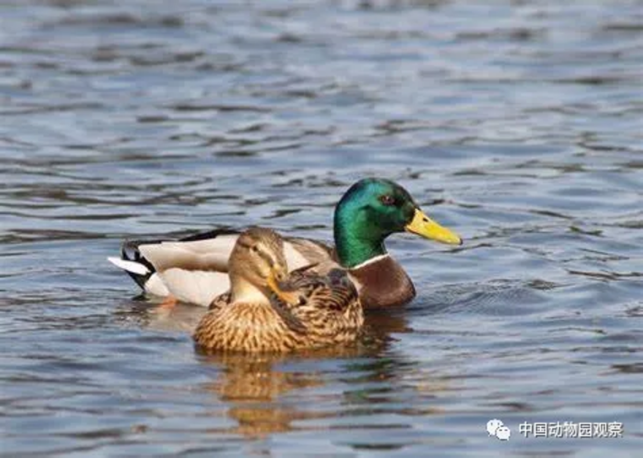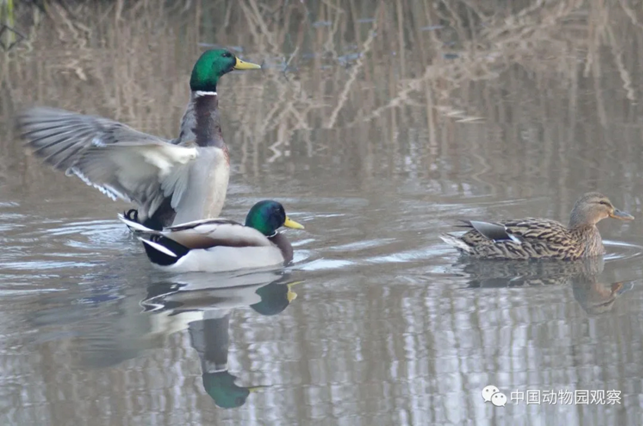On April 8th, the Ministry of Agriculture and Rural Affairs issued the national Catalogue of Livestock and Poultry Genetic Resources (Draft for Comments), which listed 13 kinds of wild animals in “special livestock and poultry”: sika deer, red deer, reindeer, alpaca, Helmeted guineafowl, Ring-necked Pheasant, Chinese francolin, mallard, ostrich, mink, silver fox, Alopex lagopus, raccoon dog, etc. There is no significant genetic variation in these wild animals. Why are they listed as livestock in the catalog of livestock and poultry? Taking the mallard in the farm as an example, they are not differentiated from the original wild population, and they have not been domesticated into domestic animals dependent on human beings. As long as there is no cage or net, they will fly away from the farm. Therefore, the mallard is a wild animal! At present, there are many domesticated domestic ducks in China. Please let go of the mallard which is still natural Please remove 13 kinds of wild animals such as mallard from the catalog of livestock and poultry.
1. Where is the mallard coming from? Can we breed mallard?
Any encyclopedia defines mallard as a wild animal. The mallard usually lives on the bank of the freshwater lake, and it can be found in rivers, lakes, reservoirs, bays, and coastal salt flats. They frolic, forage, paddle, and mate in the water. Mallard likes to be clean. It often combs its feathers in the water and on the land and looks after each other when sleeping or resting.
Like the Bar-headed goose, the migratory birds that can fly over the Himalayas are also hard to escape from human hunting. The mallard is also prey in people's eyes, which is hard to escape from the capture and consumption of the cages and nets. Once the mallard is trapped by the bird net, it is difficult to fly out. With the concern for its companions, if there are companions in the bird net, they are reluctant to leave and linger for a long time until they fly into the cages willingly.
2. Mallards are impatient and timid. They like to live close to their companions, which is why they are often trapped by wild goose duck hunters. According to the survey, some wild geese duck farms also use the habit of mallards, which is sensitive and timid. They place medium ducks on the water surface of the farms to attract and trap mallards, sell them for breeding, or breed and produce "cultured" mallards. Its cost is much lower than that of unlocking domestication and breeding technology, and the breeding speed is very fast, but it is undoubtedly fatal to the survival of wild mallards and other migratory birds.
According to the investigation of the anti-poaching serious case group, there are many illegal hunting situations in many wild poultry farms in Anhui, Ningxia, Xinjiang, Hunan, Jiangsu, Inner Mongolia, etc. The “farms” of wild ducks and waterfowls in the six areas under investigation are all close to the natural waters where all kinds of waterfowls live. Such similar sites may not be accidental. The chaos between the so-called legal duck farms and the illegal poaching industry is by no means a case in point.
It is very difficult to investigate such cases. On the one hand, it is difficult to master the hunting site; on the other hand, it is difficult to distinguish the wild mallard from the cultured mallard. For example, in an interview, a staff member of the public security organ of Zongyang County said that at present, almost no organization and institution can detect whether wild ducks are cultivated or wild.
3. According to the survey of Asian winter waterfowl organized by the International Wildfowl Research Bureau in 1990 and 1992, the number of the wintering population of the mallard in China was 55,567 in 1990 and 39,048 in 1992. As a result of wantonly hunting, as well as the loss of surrounding the lake for farmland and environment, the number of its population is decreasing day by day. According to Baidu's "mallard" introduction, the mallard is an important economic waterfowl in China. Only the Shanghai market consumes a lot of mallards every year, and Beijing, Guangdong, Fujian, Zhejiang, Jiangxi, Jiangsu, Anhui, and many other provinces and cities also have a large demand. If the mallard is listed in the catalog of livestock and poultry as "special livestock", the wild mallard population may face the threat of extinction.
A proposal group composed of multi-disciplinary scholars and wildlife experts proposed that: from the perspective of preventing public health risks and improving the development level and quality of traditional livestock and poultry, it should be prohibited to list the wild terrestrial animals that are not evaluated and cultivated for the purpose of eating into the catalog of livestock and poultry genetic resources; the evaluation system should be composed of genetic index, economic and technological index, ecological index and epidemic prevention index. The "genetic index" refers to 1) significant genetic variation of the population; 2) differentiation of the population and the original wild population, which are highly dependent on human beings, and the animals will not escape from the breeding place without cages.
When inquiring about the network platform, there is plenty of information about trading mallards and wild ducks. For instance, Baidu Wild Duck and Mallard Bar have hundreds of information about buying, selling, and trading wild ducks and mallards. Mallard and wild duck are really hard to escape the fate of being eaten: from hunting, breeding to sales, forming a complete “Sky-net” chain. The mallard can fly over mountains, rivers, and lakes, but it cannot escape from people’s nets and diners’ gluttony.
The mallard belongs to nature, not to human beings. Please lend a hand and tell the Ministry of Agriculture and Rural Affairs, which is asking for public advice, to remove wild animals such as mallards from the catalog of livestock and poultry.


(Photo credit: wikimedia)
Original Chinese article:
https://mp.weixin.qq.com/s/V5NcjLslUBhPwWIXyNS02A
By / Xue Tongtong Modified / Maggie
